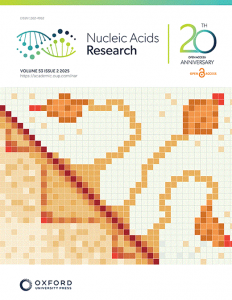Dr Magdalena Đorđević and Dr Lidija Živković, physicists at the Institute, have published a paper in the prestigious journal for fundamental molecular biology, Nucleic Acids Research, which bridges the fields of theoretical physics and molecular biology.
The paper, titled ‘Nonlinear Regulatory Dynamics of Bacterial Restriction-Modification Systems Modulates Horizontal Gene Transfer Susceptibility, ‘ deals with the DNA transfer dynamics among various bacteria, including determinants of pathogenicity, such as antibiotic resistance genes.
In addition to Dr Đorđević and Dr Živković, the authors of the paper include Dr Hong-Yu Ou from the State Key Laboratory of Microbial Metabolism at Shanghai Jiao Tong University and Dr Marko Djordjević from the Quantitative Biology Group at the Faculty of Biology, University of Belgrade. The paper originated from the Q-bioBDS project, funded by the Science Fund of the Republic of Serbia under the IDEA program.

As Dr Magdalena Đorđević, the lead author, explained, the research explored bifurcations (bistability) in the expression of restriction-modification systems in bacteria, both analytically and numerically, using models based on statistical mechanics.
These systems regulate the transfer of DNA among different bacteria, including the transfer of pathogenicity determinants such as antibiotic resistance genes. ‘The deterministic and stochastic models used in this work offered a theoretical framework for understanding and integrating a wide range of experimental data,’ said Dr Đorđević.
She stated that the key findings of the research demonstrated that cellular regulatory mechanisms promote heterogeneity in barrier permeability for horizontal gene transfer, for example, by enabling the existence of a subpopulation of cells that more readily integrate pathogenic genes.
Paper in the journal Nuclelic Acids Reserach




